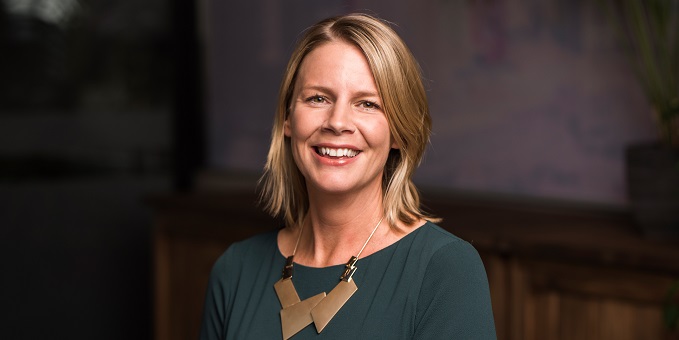
Bench PR managing director Jocelyn Hunter says simplicity is key in website design. Source: Supplied.
It’s 2019 and while the internet is a major part of the lives of most Australians, 59% of small-business owners apparently don’t have a website.
That’s according to domain host GoDaddy, who have released findings from a research project into the subject.
GoDaddy, whose findings closely mirror other recent research projects, says many businesses feel their company is too small (44%), or a website is too expensive to build (30%), so they’re avoiding it altogether.
Having a website doesn’t have to break the bank though, and while it may seem like a daunting task, plenty of business owners have gone through it.
Plenty of businesses with websites are also now switching to new ones or updating their existing platforms.
With that in mind, SmartCompany spoke to some small-business owners with experience to find out what they would and wouldn’t do again.
Avoid freelancers, hard coding and be prepared
Sharon Melamed is the managing director of Matchboard, an online company which matches suppliers with businesses.
Two months ago she moved her website from a custom-built platform to WordPress and actually had to create a second identical website to house the engine powering Matchboard’s matching platform.
“I started hearing: ‘I think it’s a fantastic business but your website looks a bit outdated’,” Melamed said about the six-year-old site.
“You do need to, at the very least, refresh and update the look and feel of a website to keep up with trends and to look like a modern company.”
Melamed’s tips?
- Give your designer a brief from the start or risk finding yourself emailing back and forth fixing little issues.
- Test everything on desktop as well as mobile — don’t be lazy.
- Build a buffer into your budget and your timeline. Website design always blows out, Melamed says.
- Design the website with minimal hard coding, so you can change and adjust the websites text, headlines and images without a developer.
- If you’re moving websites, make sure you create a URL redirect plan for all your old pages. Melamed didn’t do this and had to go back and redirect 500 pages.
- Don’t use a freelancer, opt for a developer who you can easily go back to after the website is finished for additional support.
- Platform-wise, go with something there’s lots of development support for. There are plenty of niche platforms, Melamed says, but WordPress has a massive community of developers and troubleshooters.
Don’t want to break the bank? Melamed says one of the hidden costs to websites is ongoing support charges.
“The biggest nasty surprise people have with the website is not the cost upfront but the cost of maintenance and change requests,” she says.
“What they don’t tell you with WordPress is there are so many updates … they can cause issues and then you have to get a developer to fix it in a testing environment.”
Simplicity wins
Jocelyn Hunter is the managing director of Bench Public Relations and has made five websites for her business in the last 10 years, working with three separate designers.
Her philosophy on a good website is simplicity is a winner, both from a design and operational standpoint.
Hunter’s tips?
- Visuals and videos are great but think about load times before you go filling a page with lots of multimedia. Customers will find it “annoying” if they’re waiting for too long for your website to function.
- Opt for an easy-to-use content management system. Similarly to Melamed, Hunter likes WordPress. “We had a content management system on our last website that I hated. Not intuitive. Hard to use.”
- A good host is also important. Unreliable hosts can lead to website downtime. Hunter uses WP Engine and says while it is a bit more expensive than some others, it is worth it for the reliability.
- Go for simple content. Hunter says it’s best to explain what your business does in simple terms.
- Keep it up to date. Consistency is key — if you are going to start a blog do it, or remove it from your website. “Nothing worse than seeing the last post is six months old,” Hunter says.
- Don’t ever use an under construction page. “Your website should be the old version or the new one, but a holding page doesn’t help anyone,” Hunter says.
Both Hunter and Melamed are big on mobile-first websites. Responsive designs are also important as more potential consumers browse the internet on a variety of devices. It’s important to put your best foot forward.
Happy creating!
NOW READ: Half of small businesses don’t have a business website and only a quarter use SEO: Report


COMMENTS
SmartCompany is committed to hosting lively discussions. Help us keep the conversation useful, interesting and welcoming. We aim to publish comments quickly in the interest of promoting robust conversation, but we’re a small team and we deploy filters to protect against legal risk. Occasionally your comment may be held up while it is being reviewed, but we’re working as fast as we can to keep the conversation rolling.
The SmartCompany comment section is members-only content. Please subscribe to leave a comment.
The SmartCompany comment section is members-only content. Please login to leave a comment.